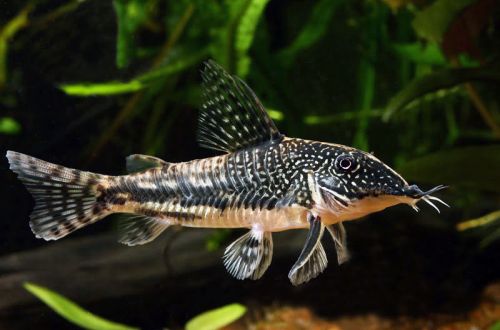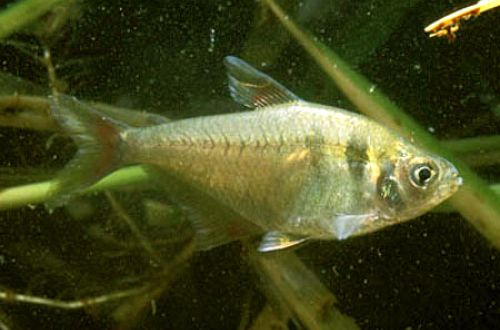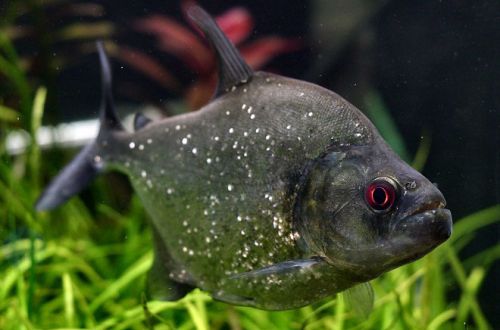
Lamellar Corey
Lamellar Cory or Bearded catfish scientific name Scleromystax barbatus, belongs to the Callichthyidae family. This is the largest member of the Corydoras genus, reaching about 10 cm. Otherwise, it is similar to its smaller relatives – unpretentious and easy to keep, goes well with other species, an excellent candidate for a general aquarium.

Contents
Habitat
It comes from a relatively small natural range of Southeast Brazil between Rio de Janeiro and Santa Catarina. It lives in coastal lakes and deltas of rivers flowing into the Atlantic, but is found exclusively in fresh water.
Brief information:
- The volume of the aquarium – from 200 liters.
- Temperature – 16-24°C
- Value pH — 5.5–7.0
- Water hardness – soft (1-12 dGH)
- Substrate type – sandy
- Lighting – subdued or moderate
- Brackish water – no
- Water movement – light or moderate
- The size of the fish is up to 12.5 cm.
- Nutrition – any drowning
- Temperament – peaceful
- Content in a harem-type group (male and several females)
Description
Adults reach a length of 10–12 cm. The coloration consists of a combination of black and yellow in an intricate speckled pattern. A yellow stripe runs along the head to the dorsal fin. Depending on the specific region of origin, the predominance of one or another color may differ. The pattern continues on the fins and tail. The abdomen is light. Sexual dimorphism is weakly expressed, females can be distinguished by more rounded shapes, the outlines of which are most clearly manifested during the spawning period.
Food
Completely unpretentious to the diet. Accepts most popular sinking dry foods such as pellets, flakes, tablets, live and frozen foods.
Maintenance and care, maintenance of the aquarium
The optimal tank sizes for a small group of fish start at 200 liters. In the design, it is recommended to use a soft sandy or fine gravel substrate, the rest of the decor elements are not of decisive importance and adapt to the needs of other fish. When keeping more than one male together, be sure to provide shelters in the form of snags, roots and tree branches (artificial or natural).
The main attention should be paid to cleanliness in the aquarium, maintaining high water quality should be facilitated not only by a productive filtration system, but also by regular cleaning of the soil from organic waste and weekly replacement of part of the water (15–20% of the volume) with fresh water.
Behavior and Compatibility
Pairs well with other calm and peaceful views. As for intraspecific relationships, they are built on competition between males, therefore, with a lack of space, skirmishes can occur, which, however, rarely lead to injuries.
Breeding / breeding
Getting offspring in a common aquarium is problematic. Firstly, the caviar will most likely be eaten. Secondly, changes in water conditions serve as an incentive for spawning, which may be unacceptable for other aquarium neighbors.
The mating season occurs during the winter months, in the southern hemisphere this coincides with the beginning of the rainy season, when the Bearded Corydoras go to spawn. Therefore, if you plan to start breeding, then by the beginning of December, catfish should be transplanted into a separate tank (40 liters is enough), filled with water from a common aquarium. The design uses a sandy substrate and thickets of plants, such as Javanese moss or artificial plants for spawning. The set of equipment includes an airlift filter with a “mature” sponge, a heater and a lamp. The chances of success will be higher if there are at least two females per male.
Live or frozen food should be included in the diet. A few weeks after the resettlement, you should begin to update the water daily with fresh water, and its temperature should be a couple of degrees lower, gradually lowering it to 16–18 ° C, pH 7.0, and dH no higher than 8. The heater is turned off.
Eggs are laid either on plants or attached to glass. After the end of spawning, the fish are returned back to the general aquarium, acclimatization may be required if the water is very different in composition. The fry appear after 3-4 days, after a couple of days they begin to swim in search of food. Feed with specialized micro food for juvenile aquarium fish, Artemia nauplii, ciliates – to choose from.
Fish diseases
The main cause of most diseases is unsuitable living conditions and poor-quality food. If the first symptoms are detected, you should check the water parameters and the presence of high concentrations of hazardous substances (ammonia, nitrites, nitrates, etc.), if necessary, bring the indicators back to normal and only then proceed with treatment. Read more about symptoms and treatments in the Aquarium Fish Diseases section.





